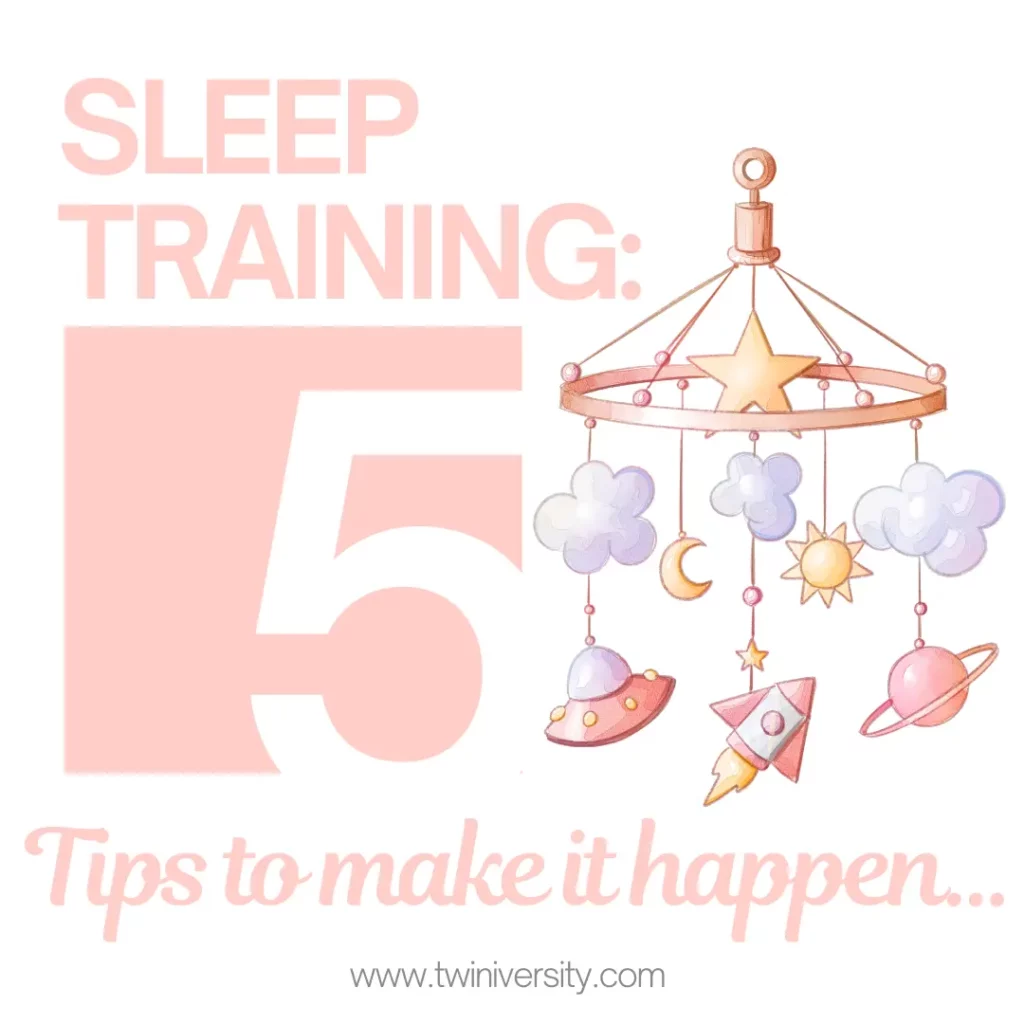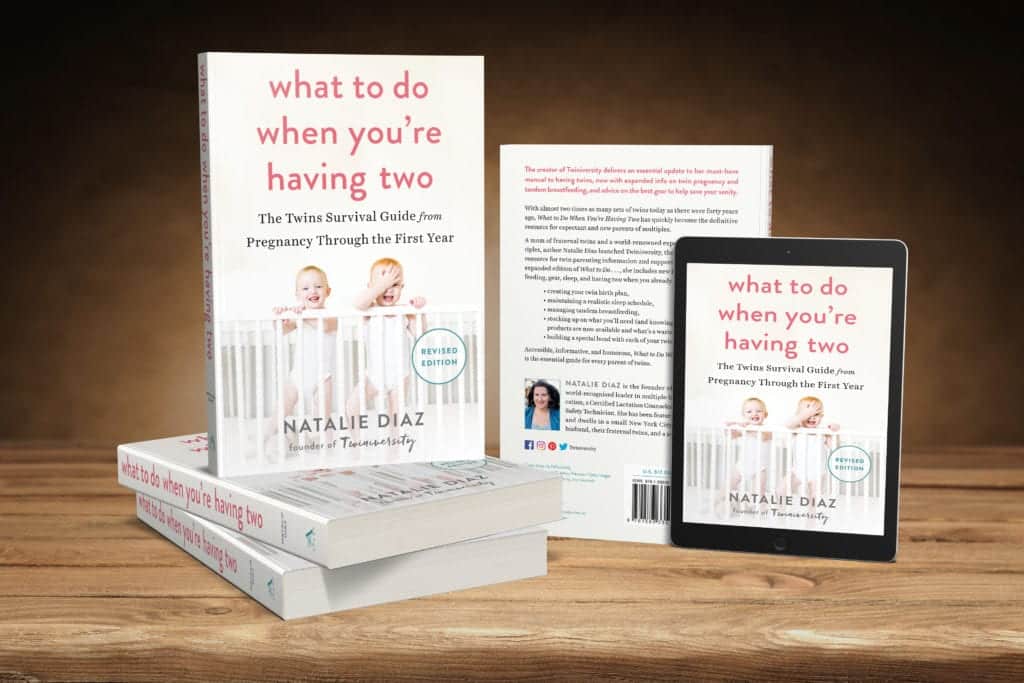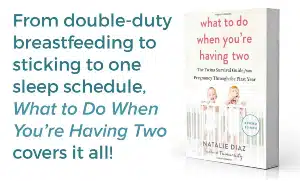Last updated on February 22nd, 2024 at 01:39 pm
When friends and family (and even strangers) found out that I was expecting twins, I was inundated with advice and opinions about how to manage the first few months. Nothing, however, went as planned. Sleep Training was something that had not yet crossed my mind.
I was told to exclusively breastfeed them both at the same time. Well, my first attempt (and all subsequent attempts) at the “double football hold” was disastrous, my son was unable to latch, and the pathetic amount of milk that I produced would never have been sufficient anyway.

Then it was recommended that I “power pump” in addition to regular pumping, and feeding them formula/breastmilk bottles on the same schedule as the NICU. After feeding and pumping, in addition to tending to all of the other baby care needs, I was getting absolutely no sleep, the kids were still getting mostly formula in their bottles, and our entire household was grumpy, bordering on miserable.
So, once we no longer had to feed the kids every three hours (and once I threw in the towel on pumping and breastfeeding), it was suggested that we put them each in their own room, feed and change them separately, and take shifts. For us, that meant one baby (and often both) constantly in need. The parent on duty running from room to room, lots of crying (babies and parent), and generally just feeling like nothing was being accomplished efficiently.
Obviously, there are some families that swear by all of the above. They probably feel like caring for multiples in shifts, or tandem breastfeeding, was a lifesaver, and couldn’t imagine doing it any other way. I understand that different tactics work for different families. When asked I don’t really have strong convictions one way or the other about how someone should feed their multiples, or handle middle of the night wake-ups, or divide up baby duties. I would generally recommend the exact opposite of what we tried in the first couple of months – with one exception. For me, the bright, shiny “Holy Grail” advice was to get the kids on a schedule, and to train them to sleep in the same room. The Moms on Call method, specifically, was a miracle for us.
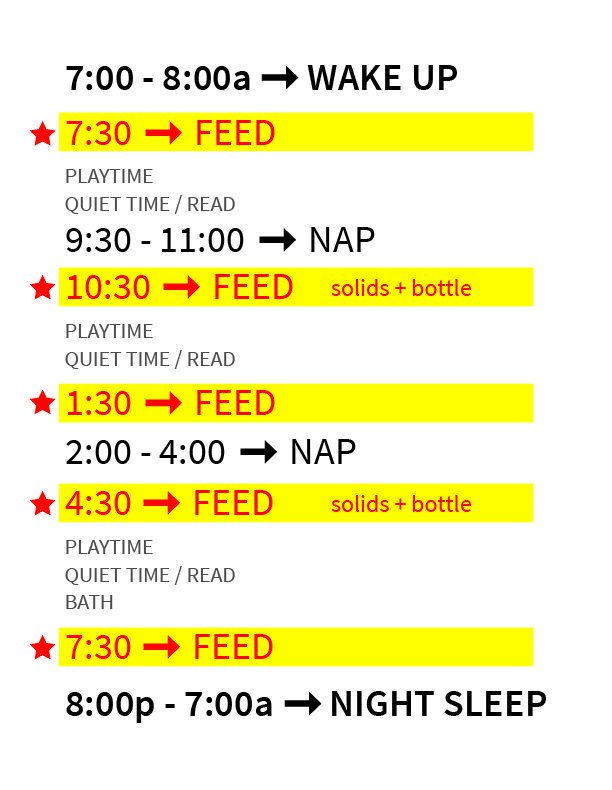
It did seem crazy to wake my sleeping daughter and feed her at the same time when my son woke up in the middle of the night. Yes, it did seem harsh to put a baby in the crib when s/he wasn’t fully asleep and probably would have preferred to be rocked or soothed. Yes, I did fear that a sleeping baby would be woken up when the other was having a fit or issue. However, I truly think that sleep training our kids in the same room was the best thing we could have done for them and for us! Thanks to sleep training we had happier babies, and much happier parents. My children are now 7 years old and are great sleepers; in bunk beds in the same room. For now, they still love sharing a room, and are comforted by each other’s company. We have endured night terrors, sickness and misbehavior – with the other sleeping soundly in the same room, none the wiser.
If you are looking for a sleep solution, and want or need to keep your kids in the same room – here are my top five tips to help make it happen:
1. Remember that “Sleep Begets Sleep.”
It seems so counter-intuitive to put children to bed earlier or more often to get them to sleep longer and better – but it works! The naptimes and bedtimes change as your kids get older, but the important thing to remember is that kids need lots of sleep – probably more than you think.
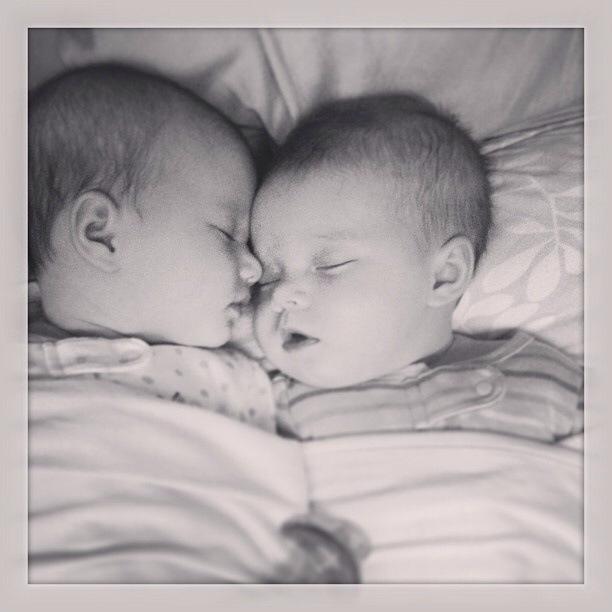
2. Don’t Wait for Them to Be Asleep to Put Them in Their Crib
When we started putting our twins to bed “drowsy but awake” they didn’t fight sleep as much – trying to coerce an over-tired, fussy baby to go to sleep is hard! Less fussing and crying at bedtime is great, but the big bonus of doing it this way is that they taught themselves to go to sleep in ways that will last as they get older (i.e. they won’t need to be rocked or soothed when they are too big to fit in the crook of your arm).
3. Use a Sound Machine
Although your twins may need an early bedtime, the rest of your household is likely not ready to settle down at 6:00. The white noise blocks out the dog barking, the pots and pans banging, and even helps mask the incredibly loud grunts and snuffles of another sleeping baby close by.
4. Make Sure Your Kids Know It Is Bedtime
We were on a pretty strict schedule when the kids were little, which meant we generally fed them at same time each day, had specific play times, and knew exactly when they would nap and go to bed. When it was nearing bedtime we did the same things every night – bathed them, swaddled them tightly, gave them their last bottle in a darkened room, turned on the sound machine, and read a bedtime story. Those were all cues to the kids that it was bedtime – and I think it helped that they knew what to expect and what was expected of them at that time.
5. Don’t Give Up Too Quickly
When first sleep training, and even just when the kids hit a new stage, there are bound to be bumps along the way. Your twins may go through a period where they are really resisting sleep and one or both are crying. One may try to wake the other on purpose as they get older, or they may have trouble settling down once they realize their sibling is in the room and they can entertain each other. When something like this happens don’t rush to separate them or find another solution – it almost always works itself out. As my mom likes to say – “This Too Shall Pass” – and it really does. You will be amazed at the shenanigans that each will sleep through!

Shellie Fossick is “mom” to 9 year old boy/girl twins. She is also the Development Director for a non-profit organization that provides high-quality early care and education for more than 400 low-income children in Middle Tennessee. She lives in Nashville, TN with her husband and two children.
Related Articles
- Safe Sleep: Reducing the Risk of SIDS
- The Sleep Stages of Twins
- Sleep Deprived Moments of Parents of Multiples
Are You a New Twin Parent?
Check out Natalie Diaz’s book:
“What To Do When You’re Having Two
The Twin Survival Guide From Pregnancy Through the First Year”
In What to Do When You’re Having Two: The Twins Survival Guide from Pregnancy Through the First Year, national twins guru and founder of Twiniversity (and twin mom herself!) Natalie Diaz provides a no-holds-barred resource about life with twins, from pregnancy and birth all the way through your duo’s first year of life.
Accessible and informative, What to Do When You’re Having Two
is the must-have manual for all parents of twins.
Have you taken your expecting twins class yet? We offer a great class on demand so you can take it on your own schedule! There are so many video modules covering everything from your twins’ baby registry to your first week at home with twins! Sign up today to get started before your twins arrive.
Need some twin parent friends? Get the support you need with a Twiniversity Membership. Benefits include a monthly twin parent club meeting on Zoom, access to a private Facebook group just for twin parents, and a video library of twin parenting lessons. Visit Twiniversity.com/membership to join today!

Twiniversity is the #1 source for parents of
multiples, and we are growing faster every day!
Find us all over the web:
Or contact us by email at community@twiniversity.com

